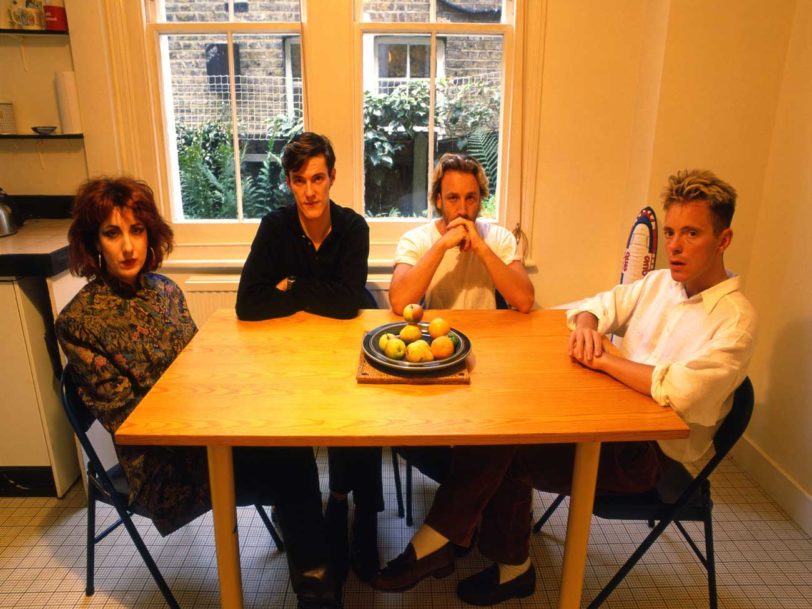In his book Unknown Pleasures: Inside Joy Division, New Order co-founder Peter Hook writes, “You are very lucky in a group to change the world culturally and musically once. We were very, very lucky to manage to do it twice.” Changing the world “culturally and musically” might seem like a bold statement, but in the case of Joy Division and New Order, it’s completely justified. Between 1981 and 1987, they released a series of 12” singles that went on to form the Substance 1987 compilation: a cornerstone in music history.
Listen to ‘Substance 1987’ here.
Most bands aren’t New Order…
Most bands would be sitting on at least a decade of material before they’d consider a retrospective compilation, but most bands aren’t New Order. To promote the collection they released a 12 Inches of New Order ruler, designed by frequent collaborator – and creator of their 12” artworks – Peter Saville, etched with each single’s track title.
The unique appeal of New Order’s singles during this period was their unpredictability. The 7” versions of their singles often featured different mixes or recordings to the 12” versions, and the group’s singles frequently didn’t feature on any of their studio albums. This level of variety is a key part of New Order’s appeal, making them one of the few bands where you’ll have many versions of their tracks to choose from.
The impact of New Order’s 12” singles was far-reaching, not least in UK club culture, where they were frequent favourites during DJ sets. However, their influence wasn’t just felt on the dancefloor, but spread throughout the local Manchester music scene. The iconic Haçienda club was funded and propped up throughout its history by New Order and their equally legendary record label, Factory Records.
The tracklist for the original 1987 double-vinyl release of Substance 1987 included all of New Order’s 12” singles to date in the chronological order in which they were released through Factory Records. Here’s a breakdown of all 12 of those featured singles, with each one demonstrating how New Order continually evolved during their remarkable first phase.
‘Substance 1987’: Behind The New Order 12” Singles That Changed The World
Ceremony (FAC 33, 1981)
The true bridge between Joy Division and New Order, Ceremony was originally written by the former shortly before the death of frontman Ian Curtis, and Joy Division performed the song live once, at their final gig, in Birmingham, on 2 May. New Order re-recorded the song after Curtis’ death, with Bernard Sumner taking over vocal duties. Given its history, it seems odd to class Ceremony as a debut single, but it is undoubtedly one of the greatest debut singles of all time.




